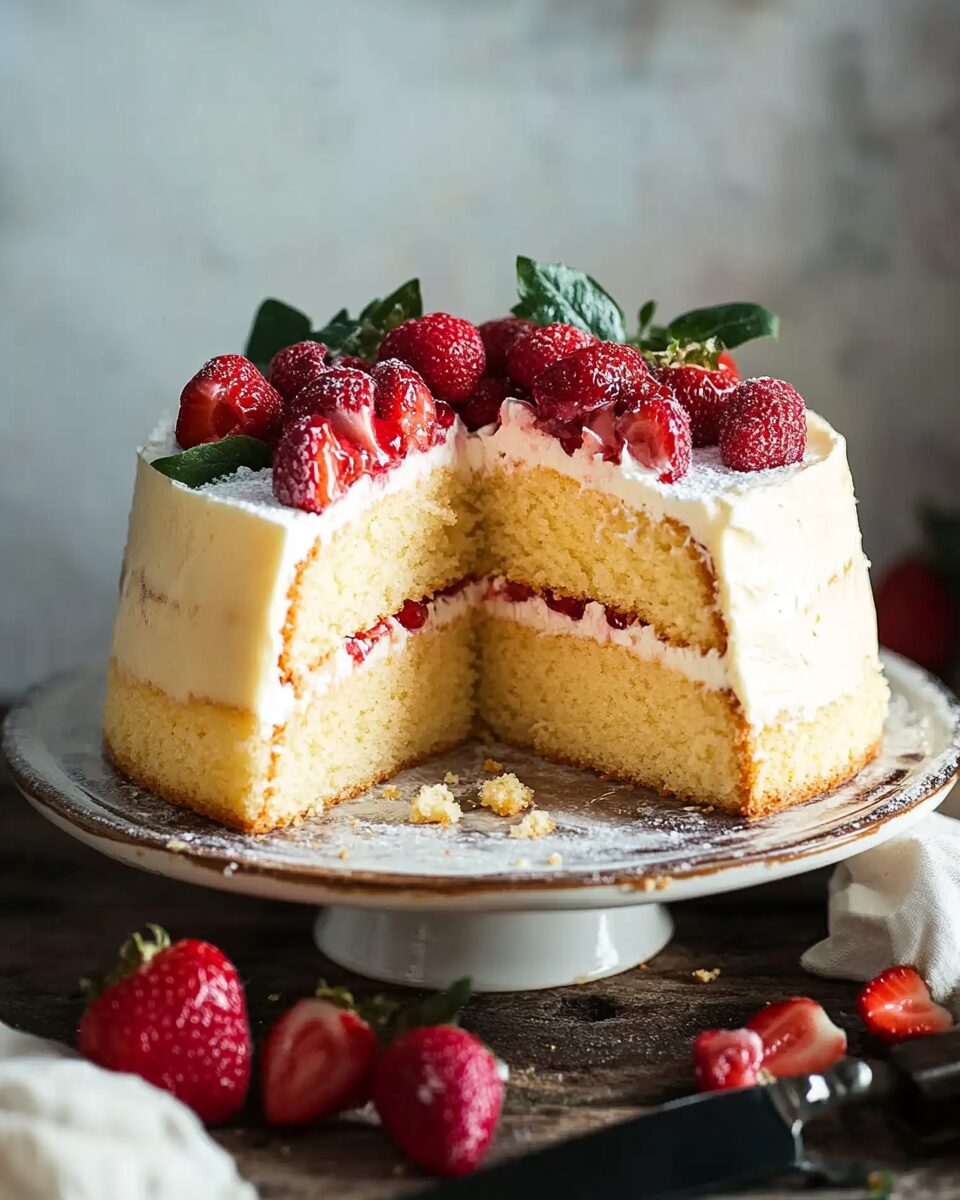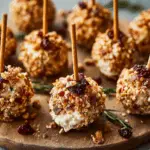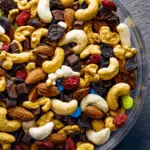Vanilla sponge cake is the quintessential treat that every home baker should have in their repertoire. Its light and airy texture makes it perfect for layered cakes or served simply with a dusting of powdered sugar. This cake serves as a blank canvas for your creativity, allowing you to pair it with a variety of frostings, fruits, or whipped cream.
Not only is this cake a delight in flavor, but it also stands out visually. The golden-brown top and soft, pale crumb create an inviting appearance that’s hard to resist. Perfect for birthdays, afternoon tea, or just a sweet snack, this vanilla sponge cake is sure to impress family and friends alike.
Full Recipe:
- 4 large eggs
- 1 cup granulated sugar
- 1 teaspoon vanilla extract
- 1 cup all-purpose flour
- 1/2 teaspoon baking powder
- 1/4 teaspoon salt
- 1/4 cup unsalted butter, melted
- 1/4 cup milk
Directions:
- Preheat the oven to 350°F (175°C). Grease and flour an 8-inch round cake pan.
- In a mixing bowl, whisk together the eggs, sugar, and vanilla extract until light and fluffy, about 5 minutes.
- Sift the flour, baking powder, and salt into the egg mixture. Gently fold the dry ingredients into the wet ingredients using a spatula.
- Drizzle in the melted butter and milk, continuing to fold until just combined. Do not overmix.
- Pour the batter into the prepared cake pan and smooth the top.
- Bake for 25-30 minutes, or until a toothpick inserted into the center comes out clean.
- Allow the cake to cool in the pan for 10 minutes, then transfer to a wire rack to cool completely.
Prep Time: 15 minutes | Cooking Time: 30 minutes | Total Time: 45 minutes
Kcal: 180 kcal | Servings: 8 servings
History and Origin
Vanilla sponge cake has a storied past that dates back to the 17th century. Originally known as “sponge cake” due to its light and airy texture, it was a favorite among European nobility. The cake’s lightness was achieved through the aeration of eggs, which were beaten until fluffy. The introduction of baking powder in the 19th century revolutionized the baking process, making it easier to achieve the desired texture without extensive hand-whipping. Over the years, sponge cake has made its way into various culinary traditions, adapting to local flavors and ingredients. It is often associated with celebrations such as weddings, birthdays, and holidays, showcasing its versatility and enduring appeal.
Flavor Profile
Vanilla sponge cake is celebrated for its delicate and subtle sweetness, complemented by the rich, warm flavor of vanilla. The use of high-quality ingredients, such as pure vanilla extract or real vanilla beans, enhances the flavor, creating a cake that is both comforting and elegant. The light, airy texture allows for easy pairing with various fillings, frostings, and toppings. It serves as a perfect base for layered desserts, absorbing syrups and complementing the flavors of fruits, creams, and chocolates.
Variations
There are numerous variations of vanilla sponge cake, each catering to different tastes and dietary preferences:
- Chocolate Sponge Cake: Incorporates cocoa powder or melted chocolate, creating a rich, chocolaty flavor that pairs well with chocolate ganache or whipped cream.
- Lemon Sponge Cake: Infused with lemon zest and juice, this variation adds a bright, refreshing taste, perfect for spring and summer desserts.
- Almond Sponge Cake: Uses almond extract in place of vanilla for a nutty, aromatic flavor, often paired with fruit preserves or whipped cream.
- Gluten-Free Version: Substitute all-purpose flour with a gluten-free blend, such as almond flour or a commercially available gluten-free flour mix, making it suitable for those with gluten sensitivities.
- Vanilla Bean Sponge Cake: Utilizes the seeds from vanilla beans, providing an enhanced flavor and speckled appearance that adds visual appeal.
Tips for Success
- Room Temperature Ingredients: Ensure that eggs, butter, and other dairy products are at room temperature. This allows for better incorporation and a smoother batter, leading to a fluffier cake.
- Sifting Flour: Sifting flour and baking powder together helps aerate the mixture, ensuring that the cake rises properly and has a lighter texture.
- Gentle Folding: When combining the wet and dry ingredients, fold gently using a spatula or whisk. Avoid overmixing, as this can deflate the batter and result in a denser cake.
- Oven Temperature: Preheat the oven adequately and ensure it maintains a consistent temperature. An oven thermometer can help verify the temperature for optimal baking.
- Cooling: Allow the cake to cool in the pan for about 10 minutes before transferring it to a wire rack. This helps prevent breakage and ensures even cooling.
Serving Suggestions
Vanilla sponge cake can be served in various delightful ways:
- With Whipped Cream and Berries: A classic pairing that enhances the cake’s sweetness and adds freshness. Consider using seasonal fruits for added color and flavor.
- As a Layered Cake: Stack multiple layers of sponge, alternating with fillings such as custard, jam, whipped cream, or fruit compote. Frost with buttercream or cream cheese frosting for an elegant touch.
- Drizzled with Syrup: A simple sugar syrup, flavored with vanilla or citrus, can be drizzled over the cake to enhance moisture and sweetness.
- Dusting with Powdered Sugar: A light dusting of powdered sugar adds a touch of elegance without overpowering the cake’s flavor.
- As a Trifle: Layer pieces of sponge cake with custard, fruit, and whipped cream in a glass dish for a beautiful and delicious dessert.
Nutritional Information
For those mindful of their dietary intake, here’s a brief overview of the nutritional value of a typical slice of vanilla sponge cake (based on 8 servings):
- Calories: Approximately 180 kcal
- Carbohydrates: 28g
- Protein: 3g
- Fat: 7g
- Sugar: 12g
- Fiber: 0.5g (varies depending on flour type)
These values may vary based on specific ingredients, portion sizes, and any additional toppings or fillings.
Culinary Techniques
- Creaming Method: The traditional method for making sponge cake involves creaming butter and sugar until light and fluffy, then adding eggs one at a time. This creates a stable emulsion that contributes to the cake’s texture.
- Whisking Eggs: For a true sponge cake, whisking eggs (especially egg whites) until stiff peaks form is essential. This technique incorporates air, providing lift and lightness.
- Folding Techniques: Mastering the art of folding is crucial. Use a spatula to gently incorporate dry ingredients into wet ones, maintaining as much air in the batter as possible.
Culinary Uses
Vanilla sponge cake serves as a foundational recipe in many culinary applications. Here are several ways you can utilize this versatile cake:
- Layer Cakes: The sponge acts as a base for intricate layer cakes, where multiple tiers are stacked and filled with creams, fruits, or ganaches. The lightness of the sponge allows for stacking without collapsing, providing stability and aesthetic appeal.
- Cupcakes: Vanilla sponge cake batter can be baked in cupcake liners for individual portions, perfect for celebrations or as treats for events. They can be topped with buttercream frosting, cream cheese frosting, or whipped cream.
- Pavlova Base: When prepared in a larger format, vanilla sponge can be used as a base for a pavlova. Topped with whipped cream and fresh fruits, it creates a stunning and delicious dessert.
- Ice Cream Cake: Vanilla sponge cake can be used as the layers in an ice cream cake, alternating layers of sponge and ice cream for a delightful frozen treat.
- Pudding Cake: Transform the sponge into a pudding cake by layering it with custard and fruit, then chilling it to create a refreshing dessert.
Baking Tools and Equipment
Using the right tools can greatly impact the success of your vanilla sponge cake. Here’s a list of recommended equipment:
- Mixing Bowls: Use stainless steel or glass bowls for mixing your batter. These materials maintain temperature better and are easy to clean.
- Electric Mixer: A stand mixer or hand mixer can significantly reduce the time spent whipping eggs and butter, ensuring a more aerated batter.
- Rubber Spatula: A flexible spatula is essential for folding ingredients gently and scraping down the sides of the bowl.
- Baking Pans: Choose high-quality, non-stick round cake pans for even baking. Line the bottoms with parchment paper for easy removal.
- Cooling Rack: A cooling rack allows air to circulate around the cake, preventing sogginess and helping it cool evenly.
- Sifter: A fine-mesh sieve is great for sifting flour and other dry ingredients, which helps eliminate lumps and aerate the mixture.
Common Mistakes to Avoid
While baking a vanilla sponge cake may seem simple, there are common pitfalls that can affect the outcome. Here are a few to watch out for:
- Overmixing the Batter: Once the dry ingredients are added, mix just until incorporated. Overmixing can develop gluten, resulting in a dense cake instead of a light sponge.
- Underbaking: Keep an eye on the baking time; underbaking can lead to a soggy center. Use a toothpick to check for doneness—if it comes out clean, the cake is ready.
- Not Preheating the Oven: Failing to preheat the oven can lead to uneven baking. Always preheat to the specified temperature before placing the cake inside.
- Using Cold Ingredients: Cold eggs or butter can cause the batter to curdle. Always use room temperature ingredients for a smooth batter.
- Improper Cooling: Avoid cutting the cake while it’s still warm, as it may crumble. Let it cool completely on a wire rack before slicing.
Ingredient Substitutions
For those with dietary restrictions or who are looking to experiment, here are some potential substitutions:
- Flour: For a gluten-free version, substitute all-purpose flour with a gluten-free flour blend or almond flour. Adjust baking times as needed.
- Sugar: Coconut sugar or a sugar substitute can be used to reduce calories while maintaining sweetness. Be aware that this may affect the texture slightly.
- Dairy-Free Options: Substitute milk with almond milk, coconut milk, or any non-dairy milk. For the butter, consider using a dairy-free margarine or coconut oil.
- Egg Replacement: To make the cake vegan, replace eggs with flaxseed meal or chia seeds mixed with water (1 tablespoon of seeds with 2.5 tablespoons of water for each egg).
Storage Tips
Proper storage will ensure your vanilla sponge cake remains fresh and delicious:
- Room Temperature: Store the cake in an airtight container at room temperature for up to 3 days. Avoid refrigerating, as this can dry it out.
- Freezing: For longer storage, wrap the cooled cake tightly in plastic wrap and aluminum foil, then freeze for up to 3 months. Thaw in the refrigerator or at room temperature before serving.
- Frosting Considerations: If frosting the cake, wait until it has completely cooled. Frosted cakes can be stored in the refrigerator for up to a week.
Pairing Suggestions
When serving vanilla sponge cake, consider these delightful pairings to enhance the dining experience:
- Beverages: Pair with a light tea, coffee, or sparkling wine for an elegant touch. The flavors of vanilla sponge cake complement both sweet and bitter drinks.
- Sauces: Drizzle with caramel sauce, chocolate ganache, or fruit coulis for an added layer of flavor. Consider a vanilla or raspberry sauce to enhance the taste experience.
- Cheeses: A mild cheese, such as mascarpone or cream cheese, can be served alongside the cake for a contrasting flavor profile that enhances the overall taste.
Conclusion
Vanilla sponge cake is not just a simple dessert; it’s a canvas for culinary creativity and a staple in many baking traditions. Its ability to be transformed into various desserts makes it an essential recipe for any home baker. By understanding the history, techniques, and potential variations, you can elevate this classic cake to new heights, impressing friends and family with your baking skills.






